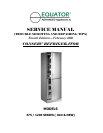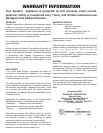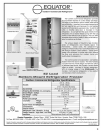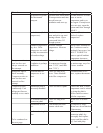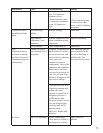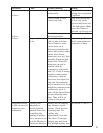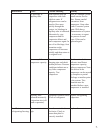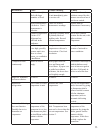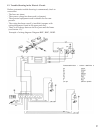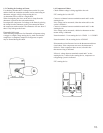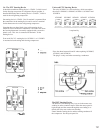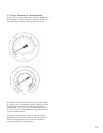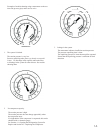
Disturbance Cause Trouble-Shooting Remedy
Oil present in system
after horizontal
transport.
Question user about mode
of transportation and time
interval between
installation and start-up.
Let unit stand for several
hours at warm
temperature and try to
start again. If compressor
does not start, open the
system and blow through
with N2.
Locked rotor (fault in
compressor).
Check that compressor
hums and picks up total
starting current. Open
system and blow N2
through system.
If system (filter) is not
blocked, replace
compressor.
Ambient temperature
very low. Oil in
compressor too cold,
possibly in connection
with undervoltage.
Measure ambient
temperature. Measure
voltage.
Find a better location for
unit. Condenser can be
insulated if necessary, but
DON’T FORGET to
remove again if ambient
temperature increases.
Compressor tries to
start but does not
always succeed on
first attempt.
Can be normal.
Ventilation is perhaps
insufficient.
Measure the temperature
of compressor housing
(max. 110°C) and filter
(max. 70°C).
Find a better location for
the unit.arrange ways for
a better ventistat.
Refrigerate and/or
freeze normally.
Compressor tries to
start but does not
succeed on first
attempt.
Standstill time for
compressor is too
short.
Check for snug fit of
doors. Time standstill
period for compressor.
If standstill time is too
short, replace thermostat.
Compressor runs
continuously. Unit
refrigerates/freezes
normally or too much.
Thermostat phial is
incorrectly installed.
Check location ofphial. Correct the fault. Cutout
temperature can be raised
by giving the phial a
greater surface contact
with the evaporator.
Ice formation around
thermostat phial.
Check for snug fit of
doors
Inform user to defrost
unit.
Thermostat set too
low.
Turn thermostat knob
counter-clockwise.
If compressor stops,
inform user about function
of thermostat.
To be continued on
the next page.
Ice formation in phial
tube.
Defrost unit. Remove
thermostat phial, dry
thoroughly and replace.
Repeat until the phial is
dry. Sealwith putty.
4.



